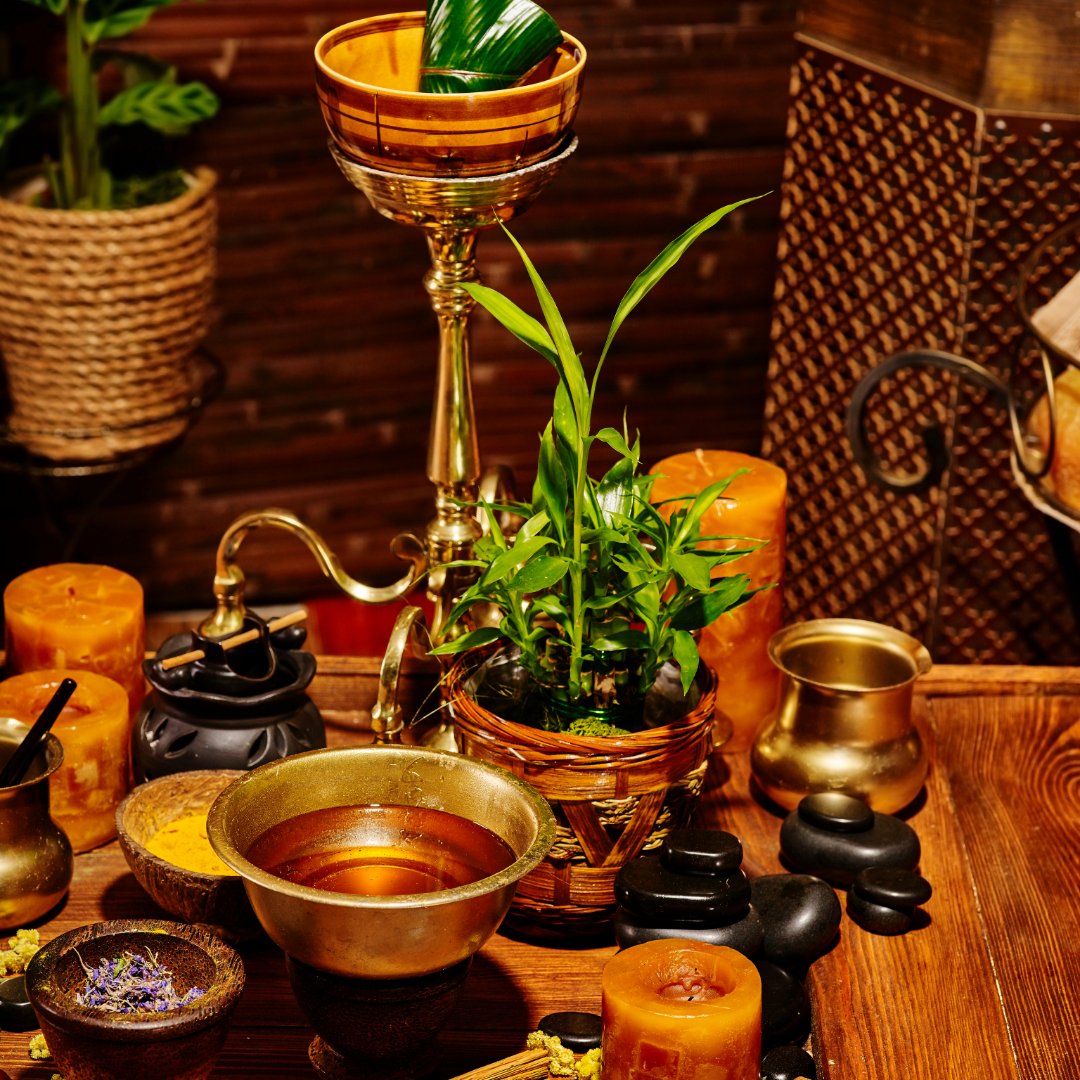Panchakarma Therapy: An Ayurvedic Path to Detox & Rejuvenation
Book Now: Panchakarma Home Therapy @ Hale Pule
〰️
Book Now: Panchakarma Home Therapy @ Hale Pule 〰️
Panchakarma Therapy: A Deep Dive into Ayurvedic Rejuvenation
In the fast-paced world we live in, the quest for holistic wellness and inner balance has become more important than ever. Panchakarma, a cornerstone of Ayurvedic medicine, offers a time-tested path to achieving these goals. Originating from ancient India, Panchakarma therapy aims to detoxify, rejuvenate, and balance the body, mind, and spirit. The term "Panchakarma" translates to "five actions" or "five treatments," which are designed to cleanse the body of accumulated toxins and restore its natural harmony.
When and Why Should You Consider Panchakarma Therapy?
Panchakarma therapy is not just for those facing health issues; it can be beneficial for anyone looking to enhance their overall well-being. For instance, Ayurveda recommends undergoing Panchakarma during the change of seasons, especially from winter to spring and summer to autumn, to cleanse the body of seasonal toxins. People suffering from chronic ailments like digestive disorders, respiratory issues, skin problems, and joint pain may also find relief through Panchakarma. Moreover, Panchakarma can help in reducing stress, anxiety, and depression by balancing the body's energy and promoting mental clarity. Even if you are in good health, Panchakarma can be a preventive measure to maintain your body's natural equilibrium and boost your immune system.
Next, let's delve into the five main procedures of Panchakarma:
Vamana (Therapeutic Vomiting)
Explanation: Vamana involves the ingestion of herbal medicines to induce controlled vomiting. This helps expel toxins and excess mucus from the upper gastrointestinal tract.
Benefits:
Clears respiratory system congestion.
Improves digestion and metabolism.
Alleviates symptoms of asthma, bronchitis, and sinusitis.
Virechan (Purgation)
Explanation: Virechan involves the use of purgative substances to cleanse the intestines. Herbal laxatives are administered to remove toxins from the digestive system.
Benefits:
Detoxifies the liver and colon.
Improves digestion and absorption.
Effective in treating skin disorders, hyperacidity, and digestive issues.
Basti (Enema)
Explanation: Basti involves administering herbal enemas to cleanse the colon and balance the Vata dosha. Different herbal oils and decoctions are used depending on the individual's needs.
Benefits:
Removes accumulated toxins from the colon.
Balances Vata dosha, relieving constipation, lower back pain, and sciatica.
Supports the immune system and enhances overall vitality.
Nasya (Nasal Administration)
Explanation: Nasya involves the administration of herbal oils or powders through the nostrils. This treatment aims to clear the nasal passages and improve respiratory health.
Benefits:
Clears sinuses and nasal congestion.
Improves mental clarity and enhances memory.
Alleviates headaches, migraines, and stress.
Raktamoksha (Blood Purification)
Explanation: Raktamoksha involves therapeutic bloodletting to remove toxins from the bloodstream. This procedure can be performed using leeches, needles, or other methods.
Benefits:
Purifies the blood and improves circulation.
Effective in treating skin conditions, such as acne and eczema.
Reduces inflammation and relieves symptoms of gout and arthritis.
Conclusion
Panchakarma therapy is a holistic approach to wellness that aims to detoxify, rejuvenate, and balance the body, mind, and spirit. Each procedure is tailored to suit the individual's unique constitution and specific health needs, making it a personalized and effective treatment method. However, it is essential to undergo Panchakarma therapy under the supervision of trained Ayurvedic practitioners to ensure its safety and effectiveness.
What to Consider Before Trying Panchakarma Therapy
Before embarking on Panchakarma therapy, there are a few important factors to keep in mind:
Consultation: Seek advice from a qualified Ayurvedic practitioner to determine if Panchakarma is suitable for you and to customize the treatment to your specific needs.
Health Conditions: Be open about any existing health conditions, medications, or allergies you may have, as these can affect the treatment plan.
Diet and Lifestyle: Be prepared to follow dietary and lifestyle recommendations both before and after the therapy to maximize its benefits and support the detoxification process.
Commitment: Panchakarma therapy requires a commitment of time and effort, so make sure you are ready to dedicate yourself to the process for the best results.
Additionally, for those who need a home Panchakarma therapy, consider visiting Hale Pule Ayurveda & Yoga to book a consultation.
By considering these factors, you can ensure that your Panchakarma experience is both safe and effective, leading to a rejuvenated and balanced state of being.
